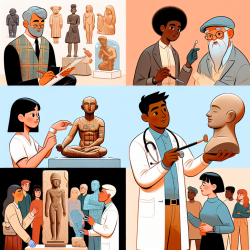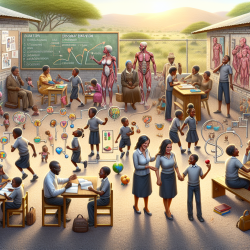Introduction
The exploration of health, well-being, and ability in archaeology offers valuable insights that can be applied to modern practices, especially in fields like speech-language pathology and online therapy services. The research article "Introduction: Health, Well-Being, and Ability in Archaeology" provides a comprehensive examination of how historical and contemporary views of the body influence our understanding of health and ability. This blog will discuss how practitioners can use these insights to improve their skills and encourage further research in creating inclusive and effective therapy practices.
Understanding Normative Bodies
The research highlights how perceptions of normative bodies have been constructed and challenged over time. These perceptions often intersect with various aspects of identity, including race, gender, and ability. By understanding these intersections, practitioners can better address the diverse needs of their clients. For instance, recognizing that societal norms often marginalize certain body types can lead to more empathetic and personalized therapy approaches.
Implications for Practitioners
For practitioners in speech-language pathology and online therapy services, the insights from this research can be transformative. Here are some key takeaways:
- Inclusive Practices: By questioning ingrained assumptions about normative bodies, practitioners can develop more inclusive therapy practices that accommodate diverse needs.
- Empathy and Understanding: Understanding the historical context of body norms can enhance empathy and improve communication with clients who may feel marginalized by these norms.
- Encouraging Further Research: Practitioners are encouraged to engage in further research to understand how historical biases continue to affect modern practices and how they can be addressed.
Encouraging Further Research
Practitioners are urged to delve deeper into the research presented in the article. By doing so, they can gain a more nuanced understanding of how historical and contemporary biases affect their field. This knowledge can drive innovation and improve outcomes for clients, particularly those who have been historically marginalized.
Conclusion
The research article "Introduction: Health, Well-Being, and Ability in Archaeology" provides a rich source of insights for practitioners looking to enhance their skills and create more inclusive therapy practices. By understanding the historical and contemporary constructions of normative bodies, practitioners can better serve their clients and contribute to a more equitable field.
To read the original research paper, please follow this link: Introduction: Health, Well-Being, and Ability in Archaeology.










